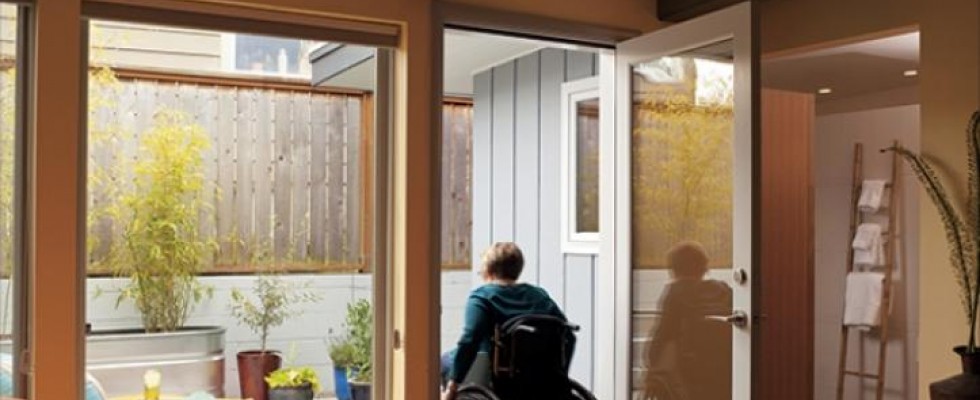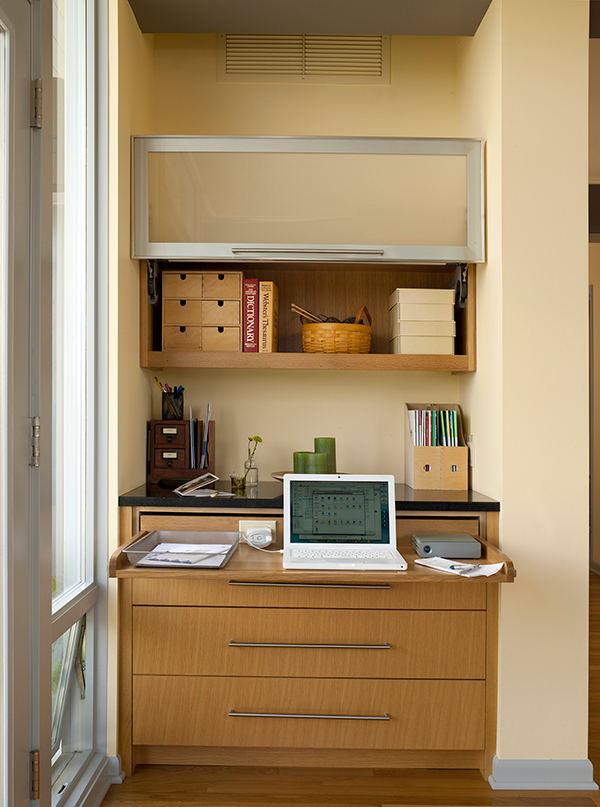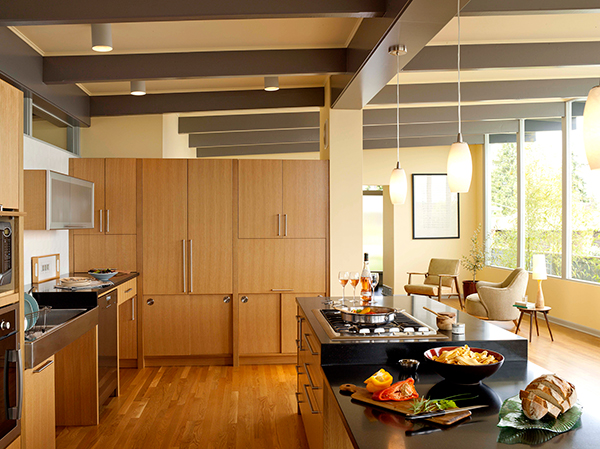
All images courtesy of Karen Braitmayer FAIA Click here for more photos of this home. When architect and designer Karen Braitmayer set out to remodel her Seattle home for accessibility’s sake, ease and efficiency of use for her family of three—including two adults in wheelchairs—were far from the only mandates. “As with all my projects, I am striving for good design,” she says. “This translates into projects that are equally beautiful and functional—for people of all sizes and abilities and with a touch of personality as well.” Along with these things, Braitmayer needed a home that suited her family’s needs now and would also grow with them without requiring costly remodels in five or 10 years. And, though she points out that all projects come with a set of challenges—whether it’s budget, scheduling or simply meeting complicated design needs—“an aging-in-place project is bound by the same issues as any other construction project,” Braitmayer says. In other words, it’s no more difficult to plan for aging than any other design concerns. Braitmayer is no stranger to these types of adjustments, having founded Karen Braitmayer, FAIA, an architectural consulting firm specializing in accessibility and Universal Design. She advises state agencies, local governments, school districts, developers and architects on accessibility for housing, commercial, retail, institutional and educational projects, and is also a Fellow of the American Institute of Architects. From 1994-2001, she served as a member of the Washington State Building Code Council, and she remains involved in the development and update of Washington State’s accessibility code. In September 2010, President Obama appointed Braitmayer to the U.S. Access Board, an independent Federal agency that provides leadership in accessible design under the ADA and other laws. Given these accomplishments, Braitmayer knows more than a thing or two about planning homes for the future.
 Reducing the size of the original master bedroom left Braitmayer without an office. A new workstation, tucked in a corner nook off the dining room, gives her a place to handle business from home while making the most of wasted space. The desk tucks back into the unit when not in use.
Reducing the size of the original master bedroom left Braitmayer without an office. A new workstation, tucked in a corner nook off the dining room, gives her a place to handle business from home while making the most of wasted space. The desk tucks back into the unit when not in use.What Sets It Apart
“At first glance, there isn’t much difference,” says Braitmayer of this architectural concept. “If you look closely, you will see at least one no-step entry, wide hallways, doorways that are a bit wider than standard residential construction (to allow wheelchairs, walkers and scooters to pass through) and one bath and bedroom on the main floor; the main floor bath will have a bit more clear floor space. These are subtle Universal Design features that make the house usable by a broader range of people over a longer lifespan.” While these details make aging in place a priority, they don’t mean the house isn’t livable—or pretty—now. “As our lives change, a house that is flexible allows us to remain in the same home over time,” Braitmayer points out. “Having a no-step entry means that baby strollers can roll inside, new appliances and suitcases can be rolled right in, and if friends or family use a mobility device, they can visit independently. A main floor bath that has extra floor space allows someone with a broken leg or who is recovering from surgery to be at home comfortably rather than movng into a rehab or nursing facility. As we age, moving to a main floor bedroom allows senior members of the family to remain at home once climbing stairs becomes a challenge.” That means the young family demographic is eligible for design that is often deemed just for aging-in-place, opening up the possibilities to more than just seniors and boomers. “The main floor bath- room with a no-step shower becomes a great place to give the dogs a bath or hose off muddy kids from backyard play or after sports practice and games,” Braitmayer explains. “And installing kitchen countertops in varying heights or lowering bathroom sinks accommodates young children helping out during family meal times or simply brushing their teeth before bed.”
How She Did It
When Braitmayer sought to make her 1950s mod house efficient for herself, husband and daughter (also a wheelchair user), she took her own advice to heart. “We gutted the interior and removed a large brick fireplace in the core of the house that was limiting our ability to adjust the sizes of the rooms,” she says. “In the end, we ‘found’ enough space for a much larger kitchen, more modest master bedroom with a luxurious bath and a full family room.” As a bonus, the house now includes better orientation and flow between the rooms. And, says Braitmayer, “The kitchen and master bath have specific features to work with my family.” Of all those features, Braitmayer’s favorite is a toss-up between the garage and the no-step shower. “Having a garage that allows us to open our modified ramp van under cover and go directly into the house is such a luxury,” she says. “We also installed a mail slot on the garage wall, which means we no longer have to go out in bad weather to get the mail. The shower has worked equally well for every member of the family, and it keeps the water inside the shower.”
 Sliding lower cabinet doors reduce the awkwardness of traditional swing styles that take up valuable space. The kitchen countertops are heat-resistant, and the dishwasher is ADA-compliant. Open areas beneath the sink and countertops allow Braitmayer to roll her wheelchair right up to work surfaces.
Sliding lower cabinet doors reduce the awkwardness of traditional swing styles that take up valuable space. The kitchen countertops are heat-resistant, and the dishwasher is ADA-compliant. Open areas beneath the sink and countertops allow Braitmayer to roll her wheelchair right up to work surfaces.Tips to Get Started
In addition to wider hallways and doorways and a no-step entry, Braitmayer suggests the following adjustments be at the top of the list for baths, which is where most of her clients start planning for aging in place: a no-step shower, larger floor space in the bath and adequate knee space below the sink. Next in line, Braitmayer says, is the kitchen. Install multiple-height countertops, plan for additional knee space below the sink and install easy-to-reach appliances. “Plumbing fixture manufacturers are getting savvy,” Braitmayer notes. “TOTO (totousa.com) is doing an especially great job with what they’re offering. The kitchen appliance market has room for improvement.” In addition, big-name manufacturers including Moen (moen.com) and Kohler (kohler.com) have also introduced lines designed specifically for aging in place. The need for Universal Design is growing, and the good news for boomers is that the cost won’t outweigh the benefits. “Our remodel was on par with the cost of a typical remodel of the same scope and quality in our region,” she says.




